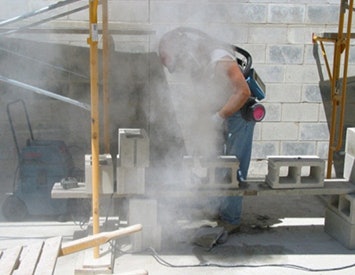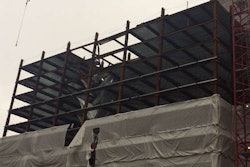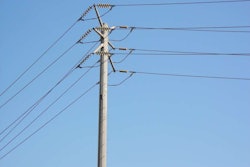 Credit: New Jersey Department of Health
Credit: New Jersey Department of HealthLast week, the Occupational Safety and Health Administration (OSHA) began its public hearings on a proposed update to its 40-year-old rule on crystalline silica exposure. Those hearings will conclude Friday, April 4 and a final rule could follow in short order, possibly providing the basis for a future rulemaking from the Mine Safety and Health Administration (MSHA).
OSHA claims that “the proposal is based on extensive review of scientific and technical evidence, consideration of current industry consensus standards, and outreach by OSHA to stakeholders, including public stakeholder meetings, conferences, and meetings with employer and employee organizations.”
Silicosis causes an inflammation and scarring of the lungs and, depending on the length of exposure and severity of the condition, can first appear in a worker between 5 and 30 years after exposure. Silica inhalation can also cause lung cancer, chronic obstructive pulmonary disease and kidney disease.
OSHA estimates the proposed rule would save nearly 700 lives per year and prevent 1,600 new cases of silicosis annually.
RELATED: Watch a vintage 1938 Labor Dept. film warning of deadly silica dust
While the goal of protecting workers is certainly an admirable one, OSHA’s proposal has numerous flaws that call its validity into question. And, since MSHA could likely follow its lead, it’s in the best interest of the construction and aggregates industries to point out the shaky basis on which it was developed.
Here’s an overview of some of the proposed rule’s flaws.
1. Sliced and diced data
Rather than using the most extensive and most recent studies available on the health impacts of silica (available through research conducted by the Crystalline Silica Panel), OSHA opted to use a 2004 NIOSH study to support its claims. Worse yet, it didn’t include the full study results when presenting the data. It cut off the highest exposure group (which included 30 deaths) to ensure the data supported the story it was trying to tell.
2. Creative math
The general rule of thumb for economic feasibility is that if a standard requires a company to spend more than 10 percent of its profit or 1 percent of its revenue, the standard is economically infeasible. To stay under that threshold, OSHA used 2006 as its benchmark. Oh, and it wasn’t a study of all companies in 2006, just the profitable ones. Does anyone think this economic analysis is representative of companies in today’s economy? Me neither.
3. Measurability
When performing its analysis, OSHA used its own laboratory, a single analyst and pure silica standards to demonstrate the threshold levels. Most labs are not able to accurately test for the standard, so they will have two years to meet quality control requirements. Operators, however, would be required to begin sampling immediately. Essentially, they would spend two years making decisions, recommendations and, potentially, investments based on potentially flawed analysis.
The bottom line is that OSHA’s rule is based on political interpretation of carefully sliced data that paints a skewed picture of the health impacts of exposure, underestimates the financial impact of compliance, and overestimates the access to technology needed for testing. This is a proposed rule that should not be finalized or used as the basis for future MSHA rulemaking.
Editor’s Note: Therese Dunphy is the editor of sister site Aggregates Manager.












